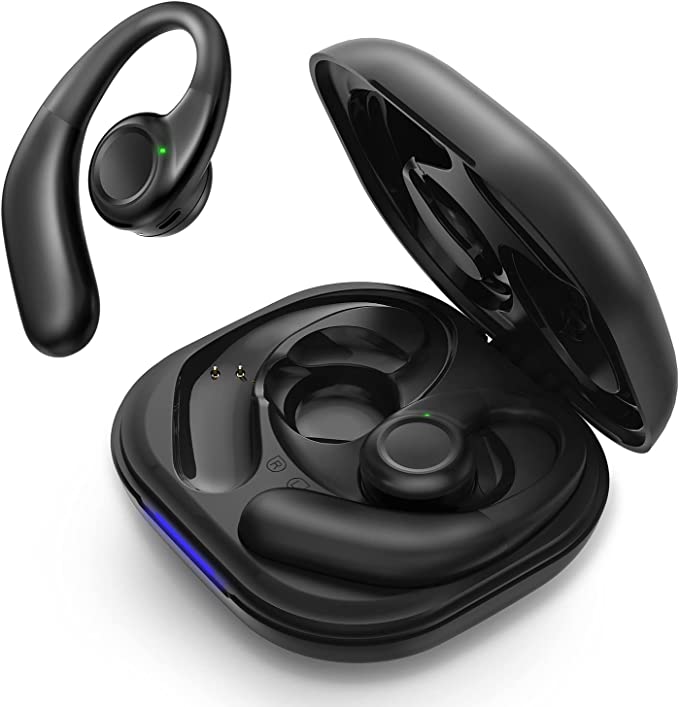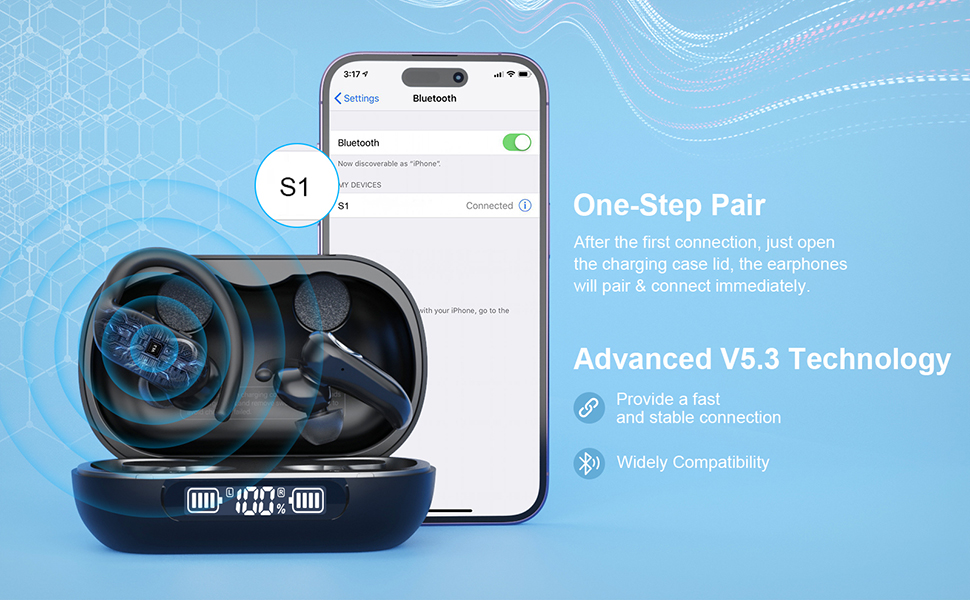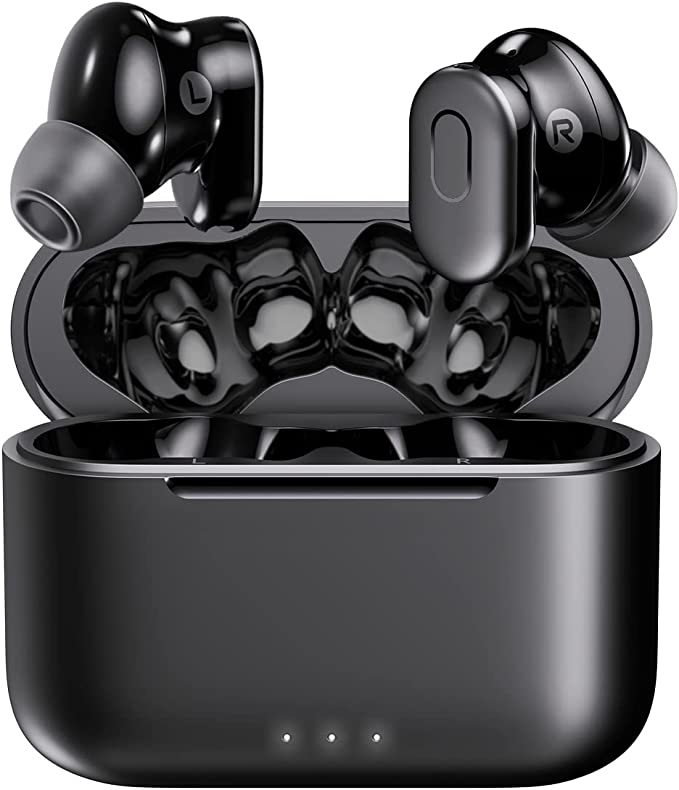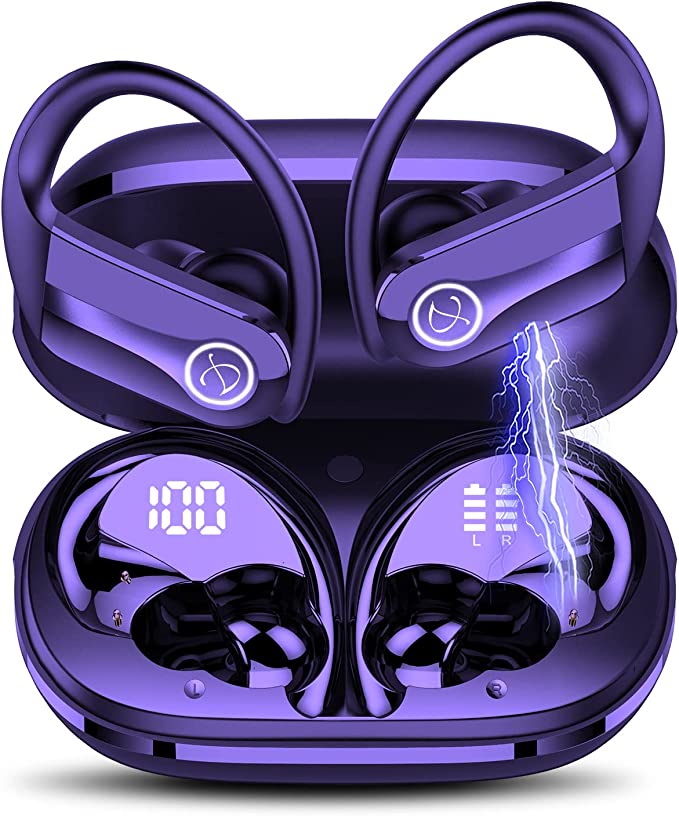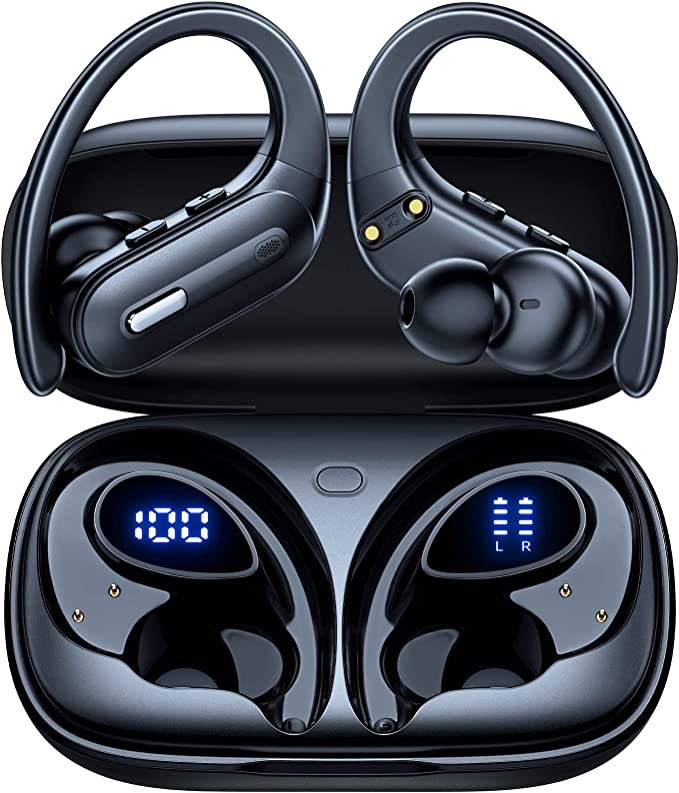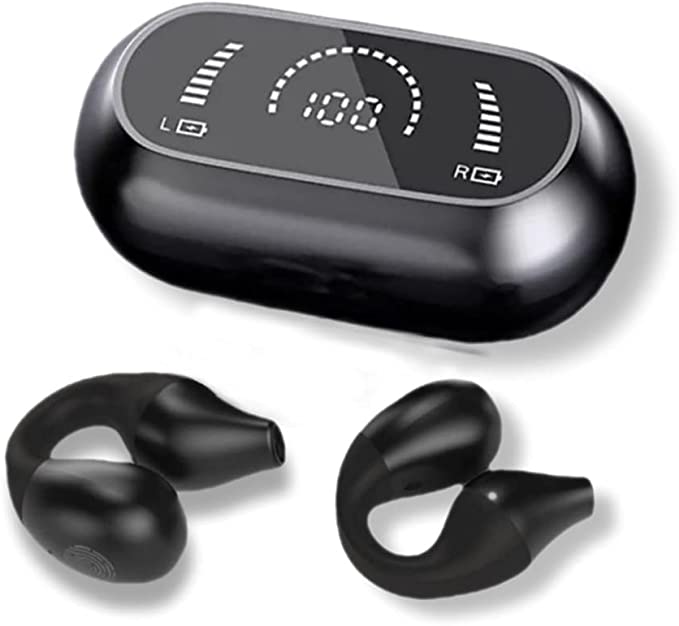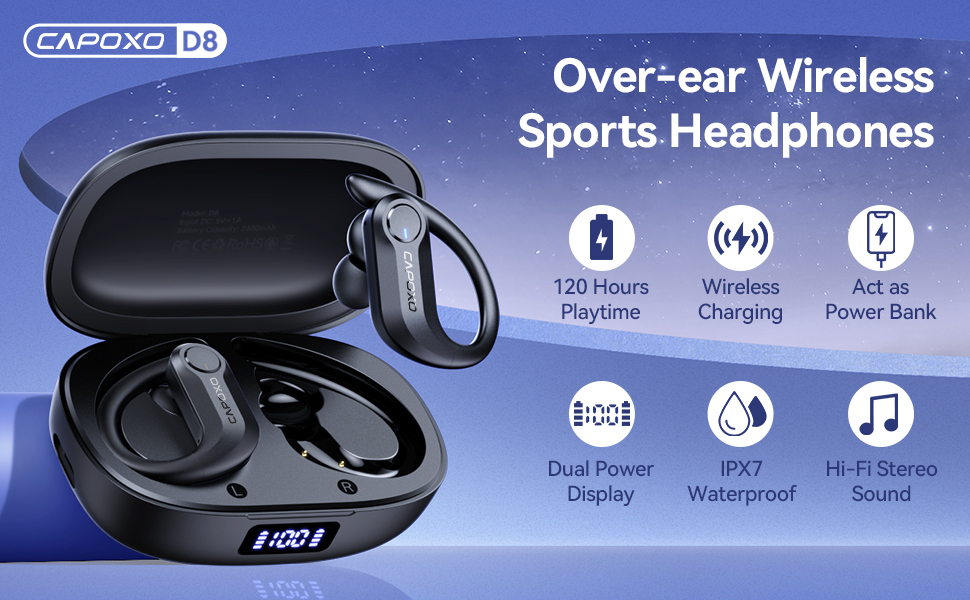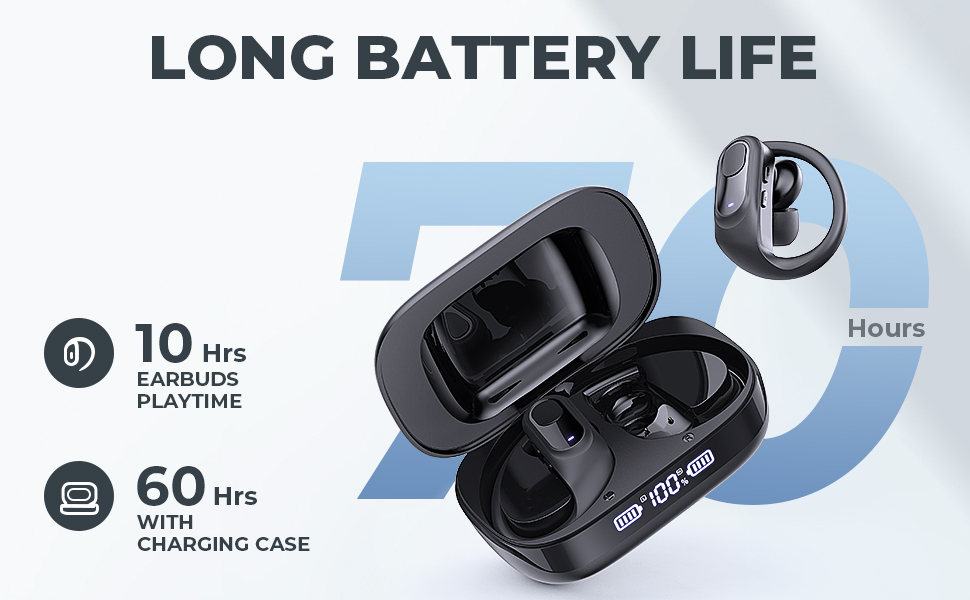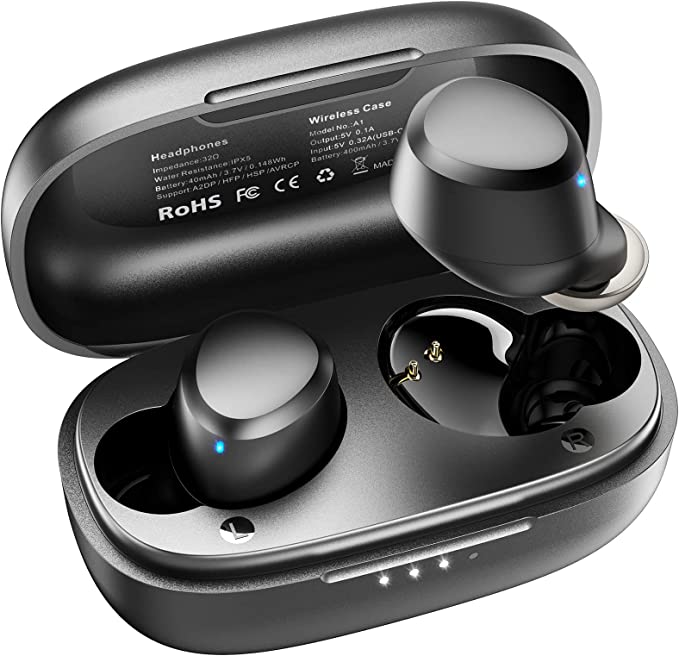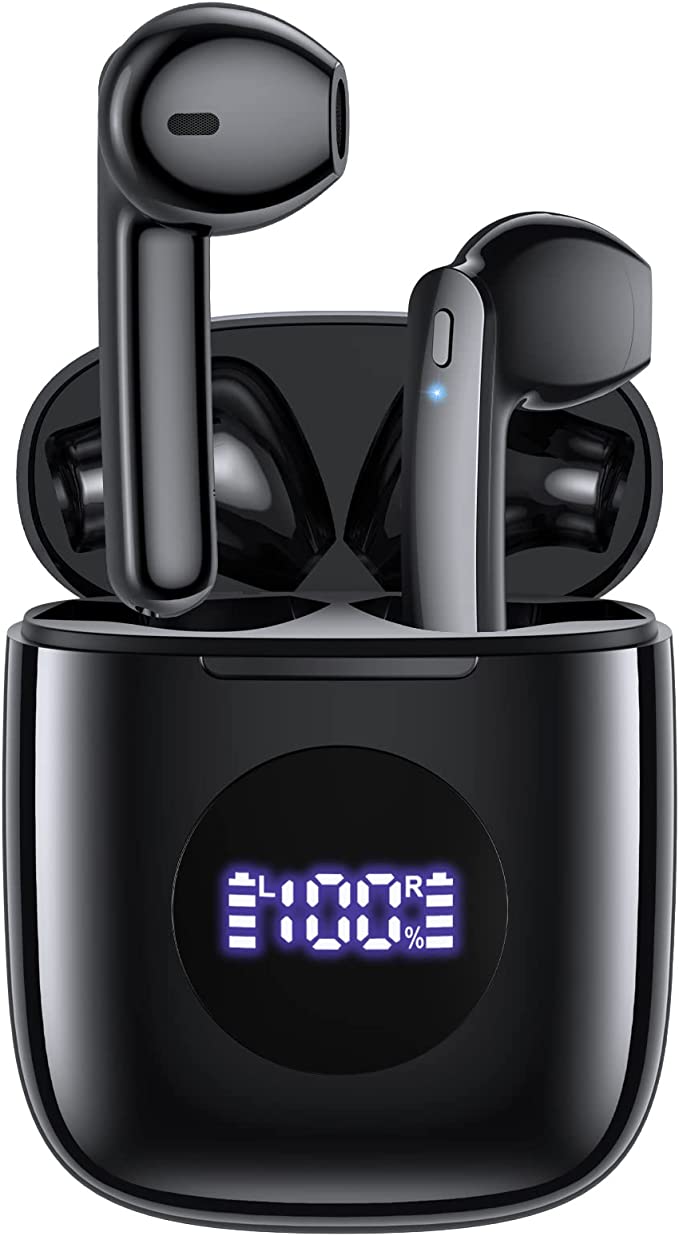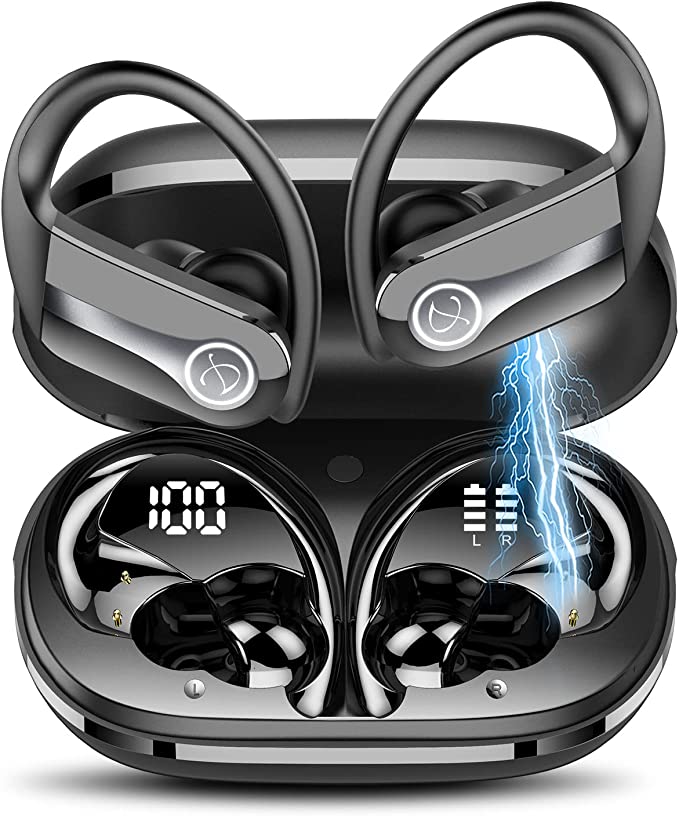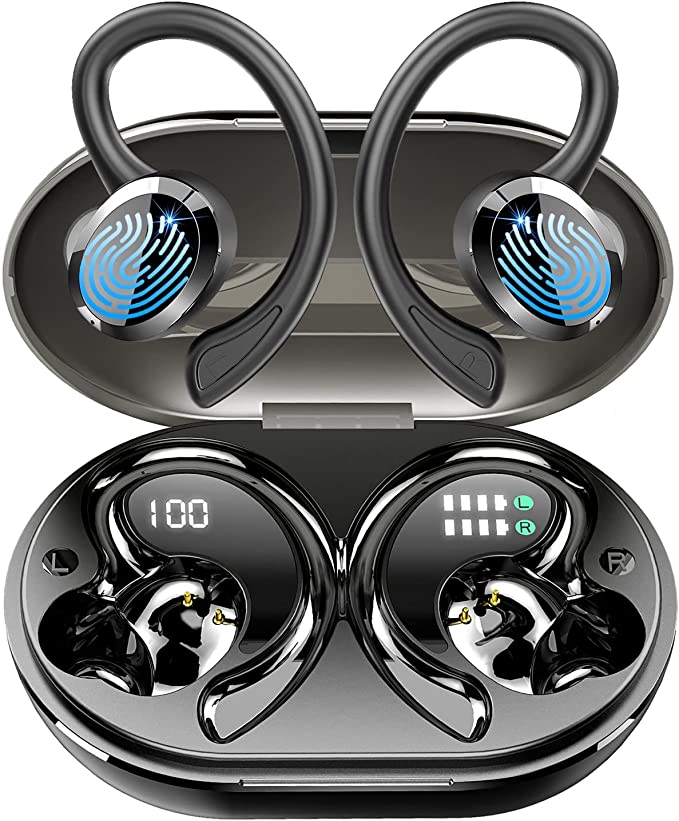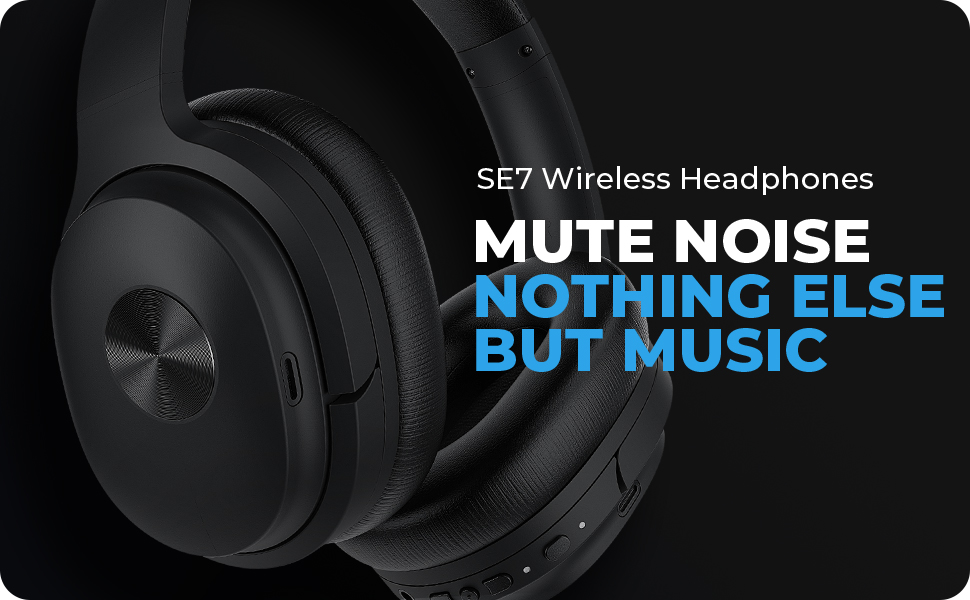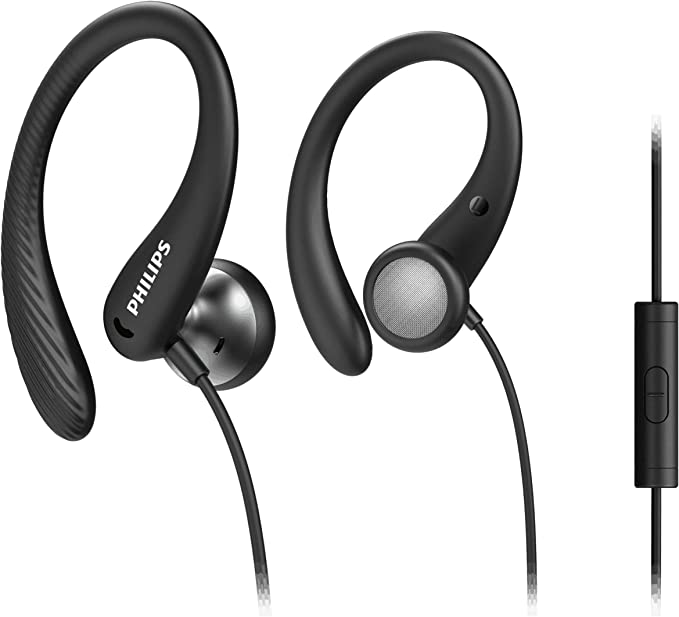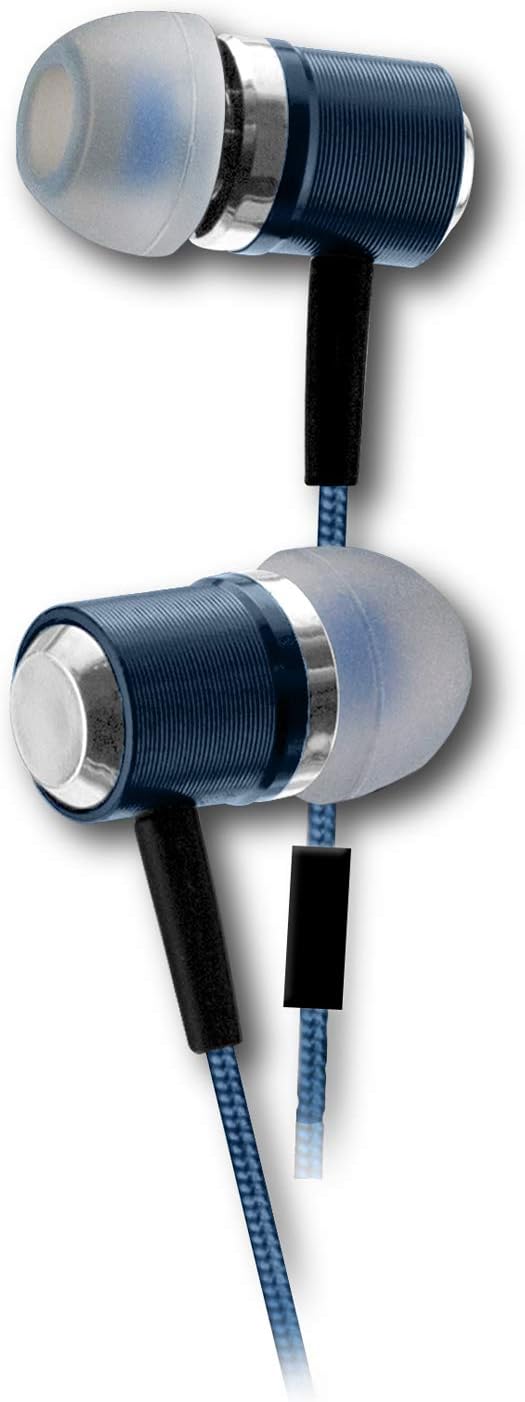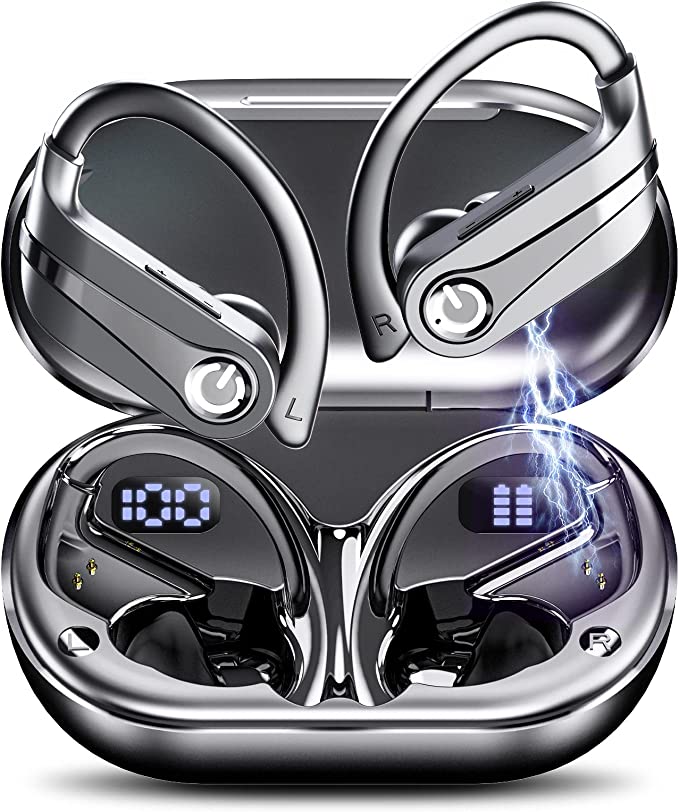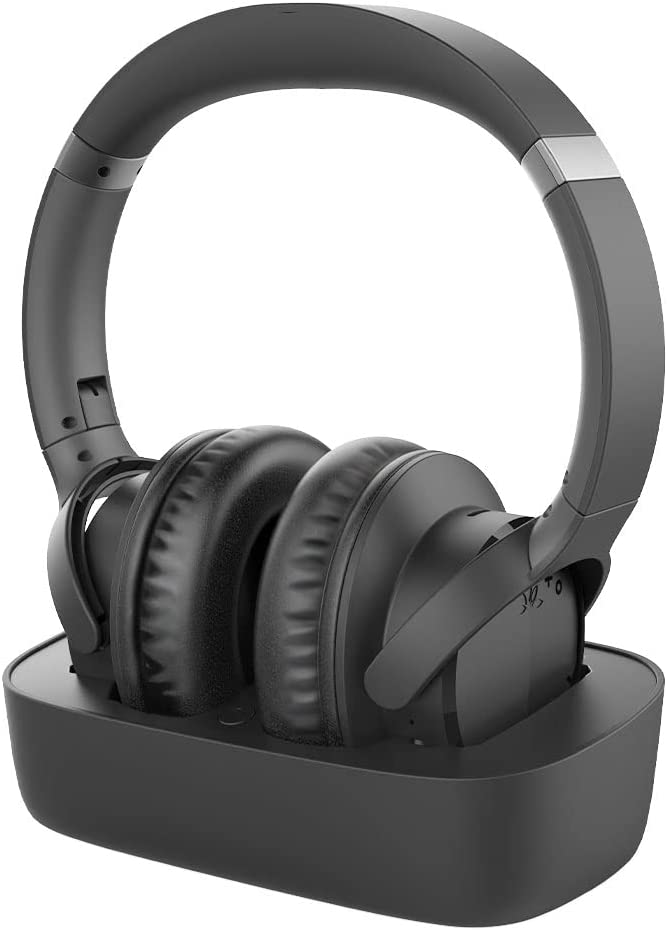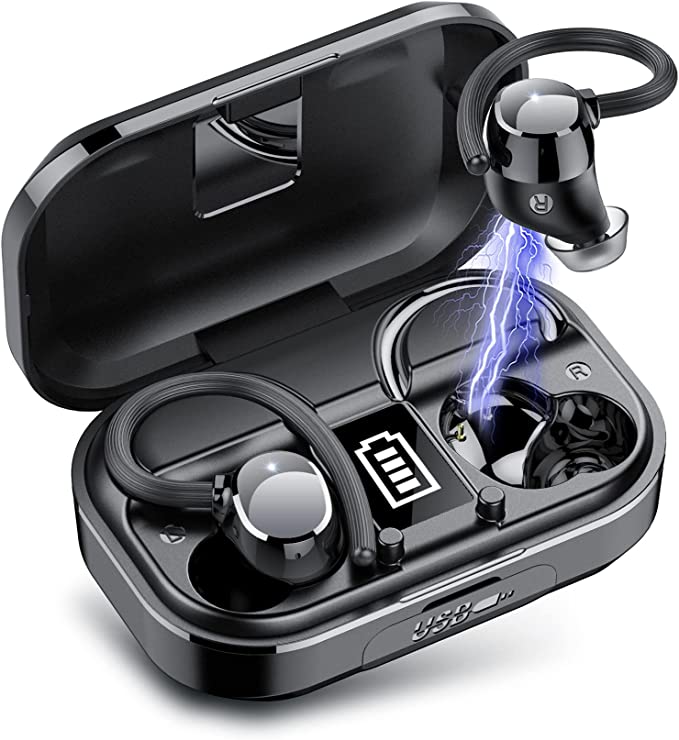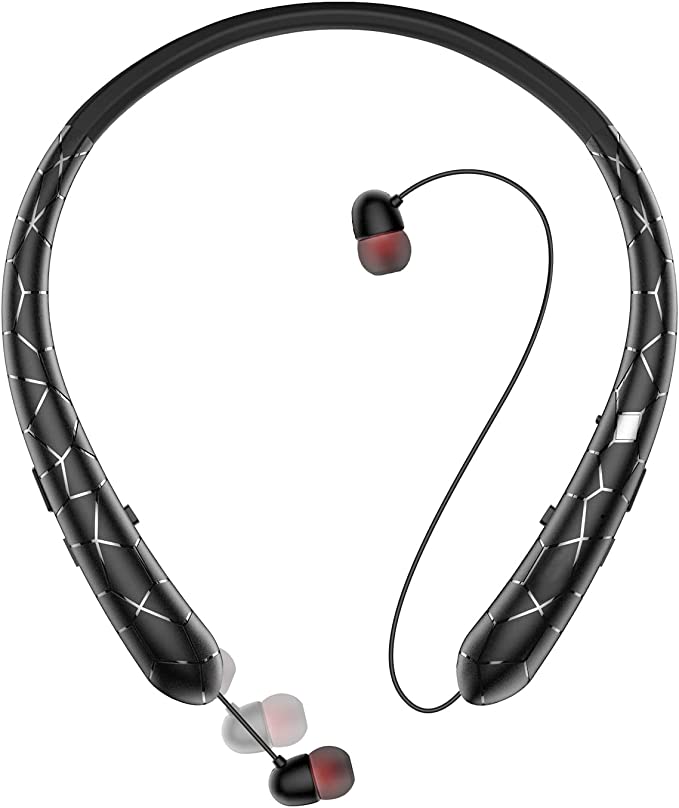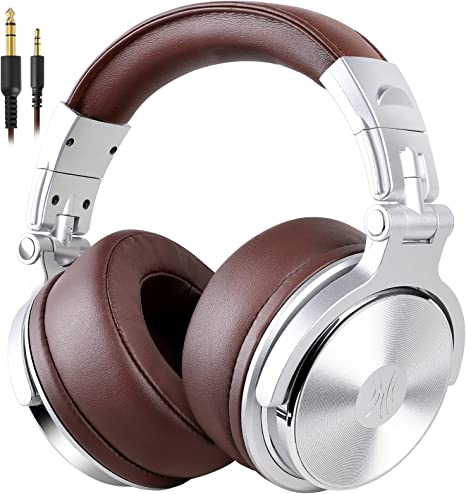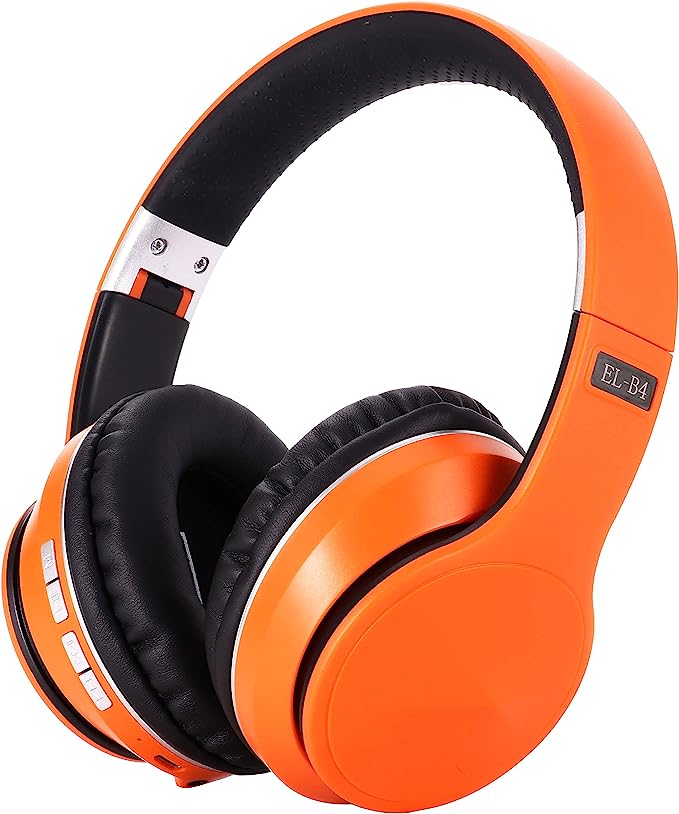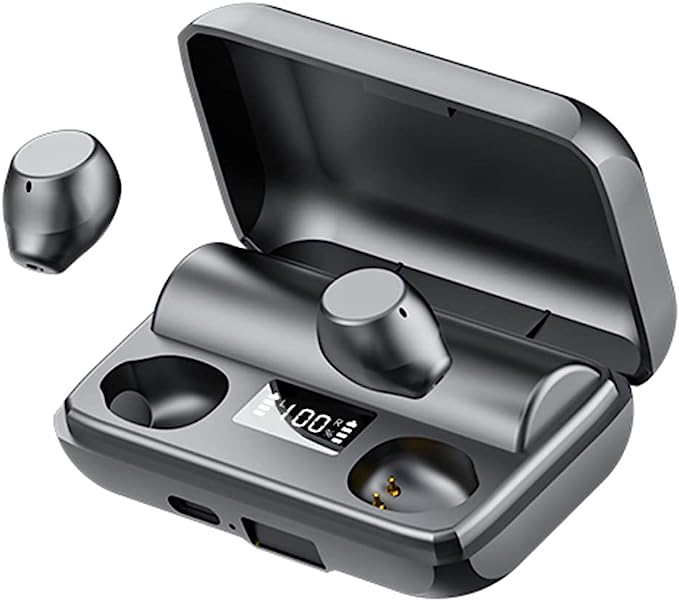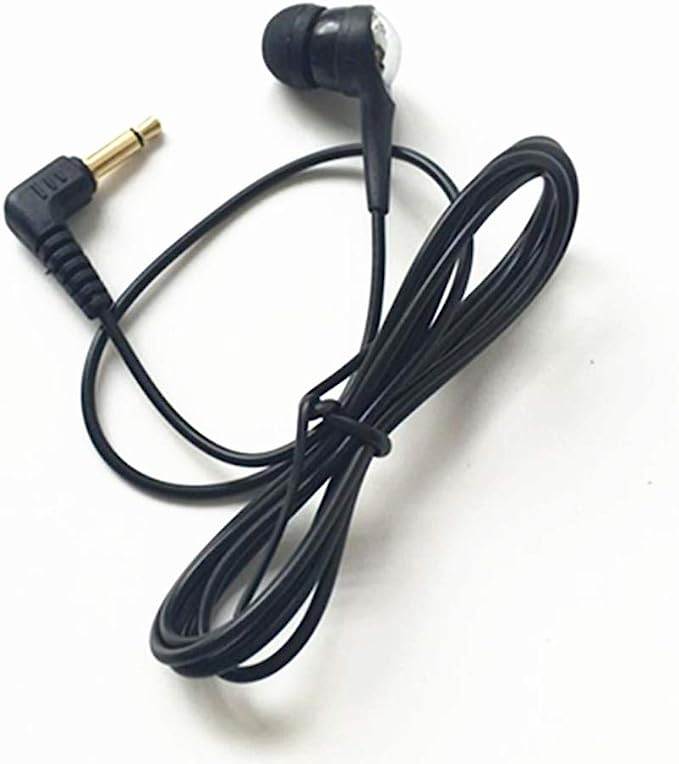PSIER SP05 True Wireless Open Ear Headphones - A Comfortable and Safe Choice for Active Lifestyle
Update on May 30, 2025, 6:22 a.m.
We’ve all been there. Lost in the crescendo of a favorite symphony, the insightful turn of a podcast, or the driving beat of a workout playlist, only to be jolted back to reality by a missed announcement, a near-collision on a busy street, or the simple frustration of feeling utterly disconnected from our immediate surroundings. For decades, personal audio often meant creating a sonic bubble, a delightful escape, yet one that frequently came at the cost of awareness, comfort, and sometimes, even safety. But what if we could have both? What if our audio could seamlessly weave into the tapestry of our lives, enriching our experiences without isolating us from them? This isn’t a far-fetched dream; it’s the promise of open-ear audio, a technology that’s inviting us to pop that bubble. Today, we’ll explore this liberating world, with the PSIER SP05 Open Ear Headphones as our capable guide.

The Unsealed Symphony: A Brief History and Science of Open-Ear Listening
The journey of personal audio is a fascinating tale of shrinking giants and evolving philosophies. If you picture the earliest “headphones,” you might imagine a telephone operator in the late 1800s tethered to a contraption weighing several pounds – a far cry from today’s featherlight companions. As technology progressed, from the military headsets of wartime to the iconic Walkman headphones that defined a generation, the primary goal was often to deliver sound directly and, in many cases, exclusively to the listener’s ears. This led to the dominance of in-ear and over-ear designs that create a seal, aiming for immersive sound and noise isolation.
However, the desire for a more “open” listening experience isn’t entirely new. Think of early stethoscopes, ingeniously designed to transmit specific sounds while leaving the physician aware of their environment. Or consider ambient office speakers, allowing for background music without hindering conversation. The modern open-ear headphone movement builds on this inherent human need to stay connected. These devices aren’t just a new form factor; they represent a paradigm shift in how we interact with personal audio and the world around us.
So, how does this magic of hearing your tunes and the approaching cyclist simultaneously actually work? Most open-ear headphones, including the PSIER SP05, employ air conduction. This is the natural way we hear: sound waves travel through the air, are collected by our outer ear, and channeled towards the eardrum. Unlike traditional earbuds that plug the ear canal, or bone conduction headphones that bypass the eardrum to send vibrations through your skull, air conduction open-ear headphones typically rest outside or on the ear. The PSIER SP05, for instance, is described as having earbuds that “can be gently and firmly placed on the top of the ear.” These earbuds house tiny speakers that direct sound towards your ear canal, leaving it unobstructed. This creates what we might call acoustic transparency – the ability for external sounds to naturally reach your ears alongside your chosen audio.
The benefits are compelling. Firstly, safety. Being able to hear traffic, a barking dog, or someone calling your name can be crucial, especially during outdoor activities like running or cycling. Secondly, comfort. Many find in-ear buds uncomfortable or fatiguing over long periods due to pressure or heat build-up in the ear canal. Open designs allow for airflow and reduce this pressure. Lastly, there’s a more natural listening experience. Our brains are wired to process a rich soundscape; open-ear designs allow for a more integrated and less artificial auditory perception, letting you feel more present in your environment.

Decoding the PSIER SP05: Where Thoughtful Technology Meets Human-Centric Design
Now, let’s peel back the layers of the PSIER SP05, as described in its product information, and see how its specific features align with the principles of open, aware, and comfortable listening, often underpinned by established scientific and technological concepts.
The Architecture of Awareness: True Open-Ear Ergonomics
Imagine a long day of remote work, punctuated by video calls, or a lengthy commute where you want to stay entertained but also alert. With traditional headphones, this can often lead to “ear fatigue” – that achy, pressured feeling, a desire to just rip them off. The PSIER SP05 tackles this head-on with its “true open-ear” design. The earbuds, as described, “gently and firmly placed on the top of the ear,” coupled with “flexible titanium ear hooks [that] gently [conform] to the contours of your ears,” aim for a secure yet non-invasive fit.
The Science Bit: Ergonomics in wearable technology is all about designing for human comfort and efficiency. For headphones, this means considering factors like weight distribution, contact pressure, and material biocompatibility. By avoiding insertion into the ear canal, open-ear designs inherently reduce pressure points and allow for better ventilation. The use of materials like titanium for ear hooks leverages its properties of being lightweight, strong, and often hypoallergenic, contributing to a “barely-there” feel that can be maintained for extended periods. As one user, Crystal L., noted in the provided reviews about a similar experience, “This is the VERY FIRST and ONLY headset I’ve ever used, for long periods of time, that do not cause any pain.” While this is an individual account, it speaks to the potential comfort benefits of such a design.
The Upside: The primary advantage is the potential for significantly improved long-term comfort, making them suitable for all-day wear. You can remain connected to your audio for work or leisure without feeling sealed off or physically strained.
Heads Up: It’s worth noting that this open design means they won’t offer the passive noise isolation of in-ear or over-ear headphones. In very noisy environments, you might need to increase the volume, or you might find external sounds competing more directly with your audio.

The Heartbeat of Sound: Understanding the 16.2mm Dynamic Drivers
Let’s say you’re settling in to listen to an orchestral piece with its soaring strings and rumbling timpani, or perhaps a modern track with deep, resonant bass lines. Your expectation is a sound that’s rich, full, and engaging, not thin or tinny. The PSIER SP05 is “equipped with 16.2 millimeters vibrating diaphragm speaker drivers that are 3 times larger than other wireless earbuds” (a comparison to an unspecified baseline of “other wireless earbuds”). But what does a “larger” driver truly signify for your listening experience?
The Science Bit: In a dynamic speaker driver – the most common type in headphones – a diaphragm (a thin membrane) vibrates to create sound waves. The size of this diaphragm matters. Generally, a larger diaphragm can move more air. This increased air displacement capability can, in theory, lead to several benefits:
- Better Bass Response: Lower frequencies (bass) require moving larger volumes of air to be perceived with impact. A larger diaphragm has more surface area to do this effectively.
- Higher Potential Loudness (SPL - Sound Pressure Level): For a given amount of movement (excursion), a larger diaphragm can produce a louder sound.
- Potentially Lower Distortion: At moderate listening levels, a larger driver might not have to work as hard (i.e., its diaphragm doesn’t need to move as far or as erratically) as a smaller one to produce the same volume, which can lead to cleaner sound.
However, size isn’t everything. The quality of the driver materials, the strength of the magnet, the design of the enclosure (or lack thereof in a truly open design), and, crucially, the acoustic tuning play enormous roles. Tuning is the art and science of adjusting the headphone’s response across different frequencies to achieve a desired sound signature – whether that’s a “pure balanced audio and clarity output” as claimed for the SP05, or something more bass-heavy or treble-focused.
The Upside: A 16.2mm driver in an open-ear design has the potential to deliver a more robust and full-bodied sound, especially in the mid-range and potentially upper bass, compared to much smaller drivers often found in compact earbuds. It aims to provide that “powerful stereo sound” and “immersive sound that puts you on the center stage.”
Heads Up: In an open-ear design, some of the sound energy, particularly lower bass frequencies which are less directional, will naturally disperse into the surrounding environment. This is an inherent characteristic, not a flaw. So, while the driver might be capable, the perceived bass in an open design might be less impactful than in a sealed in-ear headphone, especially in noisy surroundings. As user DarrenR realistically observed in the provided reviews, “They’re not going to have the greatest sound since they’re not earbuds…in a quiet environment (office) they’re fine.” This reflects the trade-off for situational awareness.
The Unseen Current: Bluetooth 5.3 and Seamless Connectivity
Imagine walking through a bustling city square, your phone tucked away in your bag, or settling down to watch a movie on your tablet. The last things you want are annoying audio dropouts, a noticeable lag between an actor’s lips moving and the sound of their voice, or a connection that drains your battery in no time. The PSIER SP05 product information states it features “the latest Bluetooth 5.3 technology, ensuring a fast and stable connection.”
The Science Bit: Bluetooth technology has come a long way since its inception. Each major version brings improvements. Bluetooth 5.3, an iteration upon the Bluetooth 5 standard, offers several enhancements that contribute to a better wireless audio experience:
- Connection Stability & Efficiency: It includes features that can make connections more robust and less prone to interference, especially in environments crowded with other wireless devices. It also allows devices to be more power-efficient by, for example, optimizing how frequently they check in with the host device.
- Lower Latency Potential: While Bluetooth itself has inherent latency, newer versions and associated codecs (the software that compresses and decompresses audio data) are continually working to reduce this. Bluetooth 5.2 introduced LE Audio, a new audio architecture that operates on Bluetooth Low Energy radio and includes the LC3 codec, designed for high-quality audio at lower data rates and lower latency. While the SP05 product page specifically mentions “Bluetooth 5.3 technology,” the degree to which it implements all optional LE Audio features would determine the full extent of latency reduction. The claim of a “low-latency listening experience with audio and video perfectly synced” is the goal.
- Channel Classification Enhancement: Bluetooth 5.3 allows peripheral devices (like headphones) to provide the central device (like your phone) with a preferred list of radio channels, which can improve reliability by avoiding congested channels.
The Upside: For the user, this translates to a more dependable connection that’s less likely to stutter or drop, a potentially better synchronization between what you see and what you hear (crucial for videos and gaming), and a contribution to overall battery life. The ease of use mentioned by user John, “They’re easy to use, pair individually on the same name so you can use one while charging the other,” also speaks to a well-implemented Bluetooth experience.
Heads Up: The full benefits of Bluetooth 5.3, especially features like LE Audio, are often realized when both the headphones and the source device (your phone, laptop, etc.) support these advanced features. An older phone might not unlock all the capabilities of Bluetooth 5.3 headphones.

The Marathon Runner: 40 Hours of Power and a Window to Its Soul
Picture this: a hectic week filled with commutes, workouts, and long work sessions, or perhaps a weekend camping trip where power outlets are a distant memory. The anxiety of a dying battery in your headphones can be a real killjoy. The PSIER SP05 boasts an impressive “40 hours of total playtime,” with the earbuds themselves lasting “up to 20 hours on a single fully charge,” and the charging case providing an additional charge. Adding to this convenience is a “smart LED Power Display in the case [that] shows the remaining battery in real-time.”
The Science Bit: This remarkable endurance is a testament to advancements in Lithium-ion (Li-ion) battery technology and efficient power management.
- Li-ion Batteries: These are the standard in most modern portable electronics due to their high energy density (more power in a smaller, lighter package), relatively slow self-discharge rate, and lack of “memory effect” (you don’t have to fully discharge them before recharging). The earbuds and the case each house their own Li-ion cells.
- Power Management: This involves not just the battery chemistry but also the efficiency of the components. The Bluetooth 5.3 chipset, as discussed, plays a role with its power-saving features. The amplifier circuitry and the drivers themselves are also designed to consume power judiciously.
- Charging Case Utility: The charging case acts as a portable power bank, allowing you to recharge the earbuds on the go. The “additional time” it provides effectively doubles the standalone playtime of the earbuds.
- Digital Display: While seemingly simple, an accurate real-time battery display is a significant user-centric feature. It eliminates the guesswork often associated with a few blinking LEDs, allowing users to manage their charging schedule proactively. User Sarja Jawara’s comment, “The battery life is great with the charging case I go for days without charging,” underscores this practical benefit. DarrenR was also “amazed” by the battery life, finding it “even longer than advertised.”
The Upside: This long playtime translates to less frequent charging, greater freedom from power outlets, and reduced “battery anxiety,” allowing users to confidently integrate the headphones into their daily routines without constant power concerns.
Heads Up: Battery life claims are often based on specific testing conditions (e.g., moderate volume, specific codecs). Real-world usage, such as consistently high volumes or frequent use of microphone for calls, can reduce actual playtime. Also, remember that all Li-ion batteries have a finite number of charge cycles before their capacity begins to degrade noticeably. The 20 hours per charge for the earbuds is the more critical figure for continuous listening sessions.

Ready for Life’s Adventures: IPX5 and Secure-Fit Earhooks
Whether you’re pushing through a grueling HIIT session, jogging in a light morning drizzle, or simply prone to perspiring, the last thing you want is for your headphones to succumb to moisture or slip out of place. The PSIER SP05 is described as having an “IPX5 waterproof” rating and “flexible titanium ear hooks [that] gently to the contours of your ears without falling out even for workout.”
The Science Bit:
- IPX5 Rating: The “IP” in IPX5 stands for Ingress Protection, a standard defined by the International Electrotechnical Commission (IEC 60529). The first digit after IP refers to protection against solid particles (dust); an “X” means it hasn’t been formally rated for dust ingress. The second digit, “5” in this case, signifies protection against low-pressure water jets from any direction. This means the headphones should comfortably withstand sweat and light rain. They are not designed to be submerged in water (so, no swimming with them).
- Secure Earhook Design: From a biomechanics perspective, earhooks work by distributing the weight of the earbud over a larger area of the ear (the auricle or pinna) and providing an additional point of contact behind the ear. This significantly increases stability, especially during dynamic movements like running or jumping, compared to earbuds that rely solely on fitting within the ear canal or concha. The “flexible titanium” suggests a material chosen for its ability to retain a shape while being adjustable, strong, and lightweight.
The Upside: For active individuals, these features offer peace of mind. You can focus on your workout or outdoor activity without constantly worrying about your headphones getting damaged by sweat or slipping off. This robust design makes them a more versatile companion for various aspects of an active lifestyle.
Heads Up: While IPX5 offers good sweat and light rain protection, it’s always a good idea to wipe down headphones after a sweaty workout to prevent long-term buildup of salts or oils, which can eventually affect materials. Also, the definition of “secure fit” can vary slightly depending on individual ear shape, so what’s perfect for one might be slightly less so for another, though flexible earhooks generally offer good adaptability.
Weaving Open Audio into the Fabric of Life: The PSIER SP05 in Action
The true measure of any technology lies in how it enhances our everyday lives. The PSIER SP05, with its open-ear design and robust feature set, paints a picture of a more integrated and aware audio experience across various scenarios:
- The Commuter’s Companion: Imagine navigating a busy train station. With open-ear headphones, you can listen to your morning podcast while still clearly hearing platform announcements or the rumble of an approaching train. Cycling through city streets becomes less perilous when the sounds of traffic – a car horn, another cyclist’s bell – are not entirely masked by your music.
- The Athlete’s Ally: Whether you’re on a scenic trail run, a bustling park path, or even in a moderately busy gym, awareness is key. Hearing a fellow runner approach from behind, a car turning into a driveway you’re about to cross, or even just the natural sounds of your environment can make outdoor exercise safer and more enjoyable. The secure fit of earhooks and sweat resistance are, of course, crucial here.
- The Office Optimizer / Home Hero: In an open-plan office or while working from home, you might need to take calls or focus with some background audio, but still need to hear a colleague calling your name, the doorbell, or your kids in the next room. Open-ear headphones allow for this dual-awareness, fostering a sense of connection rather than isolation. User SRM highlighted this balance: “I always need to stay aware of my surroundings, and I feel like these give me a good balance of listening to my content at a comfortable volume while still being able to hear what’s going on around me.”
- More Than Music: The benefits extend beyond music. Audiobooks become more immersive when you can still hear your tea kettle whistle. Podcasts accompany your chores without making you miss a delivery. They can even be a boon for parents who want to listen to something while keeping an ear out for their children.
The PSIER SP05, therefore, positions itself not just as a device for consuming audio, but as a tool for augmenting your interaction with the world, allowing your personal soundtrack to coexist harmoniously with the ambient symphony of life.
The Open Road Ahead: Considering the Full Spectrum and Future of Aware Audio
While the allure of open-ear audio is strong, it’s important to approach it with a balanced perspective. This technology, like any other, comes with inherent characteristics that might be advantages for some and considerations for others.
- The Other Side of Openness: Because open-ear headphones don’t seal your ear canal, some sound leakage is inevitable. In a very quiet environment, like a hushed library or a silent office, people nearby might be able to hear a faint whisper of your audio if the volume is high. Conversely, in very noisy environments – a loud subway car, a construction zone – the external noise can easily overpower your audio, requiring you to turn up the volume significantly, which isn’t always ideal for hearing health, or you might simply find the listening experience compromised. Traditional noise-isolating or noise-cancelling headphones excel in these latter scenarios.
- Who is Open-Ear For (And Who Might Prefer Otherwise)? Open-ear headphones like the PSIER SP05 are an excellent choice for individuals who:
- Prioritize situational awareness and safety (e.g., runners, cyclists, pedestrians, parents).
- Experience discomfort or irritation from in-ear headphones.
- Need to remain aware of their surroundings for work or social reasons.
- Enjoy a more natural, less “in-your-head” sound presentation for casual listening.
They might be less suitable for: - Audiophiles seeking the absolute pinnacle of isolated, critical listening experiences, especially for nuanced bass reproduction.
- Individuals who frequently listen in extremely noisy environments and require maximum noise attenuation.
- Those who are highly concerned about any potential sound leakage in very quiet shared spaces.
- The Horizon Beckons: The journey of aware audio is far from over. We’re seeing exciting trends emerge. Personalized sound zones, where audio is precisely directed to your ears with minimal leakage, are being explored. Augmented reality (AR) audio, which overlays digital sounds onto your real-world environment through open-ear devices, promises to revolutionize navigation, gaming, and information access. As sensor technology becomes more integrated, future open-ear devices might even monitor ambient noise levels and adjust your audiotransparently, or offer personalized hearing assistance.

Coda: Reclaiming Your Soundscape, Reconnecting with Your World
The PSIER SP05 Open Ear Headphones, by championing a design that embraces environmental awareness, extended comfort, and robust performance, represent more than just another way to listen to music. They embody a growing movement towards a more integrated and mindful interaction with our sonic world. They invite us to step out of the isolating audio bubble and rediscover the richness of hearing both our chosen soundtrack and the multifaceted symphony of life playing around us.
This shift is profound. It’s about moving from passive consumption of isolated sound to an active, aware engagement with our full auditory environment. It’s about safety on our streets, comfort during our long days, and a more natural, less occluded connection to the people and places that make up our lives. The simple joy of catching a bird’s song while listening to a podcast, or exchanging a quick greeting with a neighbor without fumbling to remove an earbud, is a testament to the subtle but significant way open-ear audio can enhance our daily existence. As we continue to explore new frontiers in personal audio, the path seems clearly marked: towards a future where our technology doesn’t just entertain us, but helps us connect more deeply – with our music, with our tasks, and most importantly, with the vibrant, ever-unfolding world around us.

